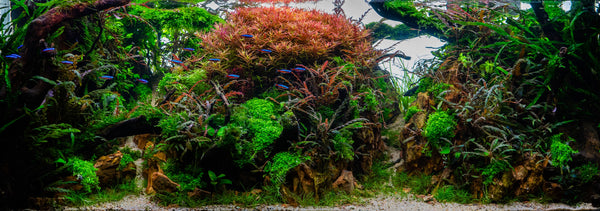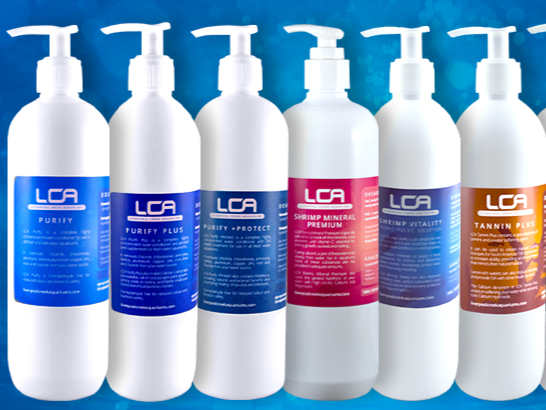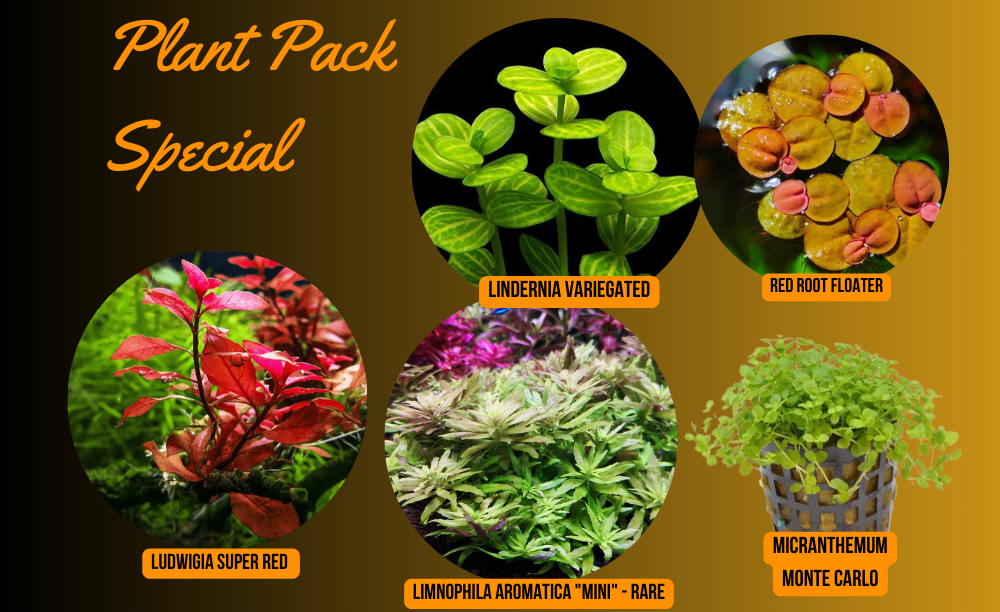Your Cart is Empty
***FREE SHIPPING ON ORDERS OVER $200***
we are back from OUR ANNUAL BREAK
DECEMBER AND BOXING DAY ORDERS WILL BE SENT FROM JANUARY 12TH
JANUARY ORDERS TOWARDS THE END OF THE MONTH
we cannot ship plants or livestock to W.A or TAS
***FREE SHIPPING ON ORDERS OVER $200***
we are back from OUR ANNUAL BREAK
DECEMBER AND BOXING DAY ORDERS WILL BE SENT FROM JANUARY 12TH
JANUARY ORDERS TOWARDS THE END OF THE MONTH
we cannot ship plants or livestock to W.A or TAS
Store

LCA Competition Winner Willie Thow
-
No – the active chemical in both products is Glutaraldehyde, and using both products at the same time could be harmful to livestock.
-
Yes. When dosed correctly, LCA Carbon Plus should not harm shrimp or fish.
-
No. LCA Carbon Plus provides bio-available carbon and micronutrients to boost plant growth. However it is not liquid CO2 or a replacement for pressurised CO2.
-
Yes. LCA Carbon Plus can be a great supplement for a tank using pressurised CO2 and will also help to suppress algae
-
LCA Carbon Plus is double the concentration, and unlike Excel it also includes micro nutrients to boost plant growth.
-
Yes and no. LCA Carbon Plus is primarily for increasing levels of bio-available carbon in your planted tank, and inhibiting growth of algae. However, it also supplies a small amount of micro nutrients. With the carbon and micro nutrients working together you will notice increased growth in your planted tank.
-
Yes. You should keep fertilising as normal to avoid fluctuating nutrient levels.
-
The active product in LCA Triple B is Glutaraldehyde, which in higher concentrations has the possibility to reduce oxygen levels in aquariums. Ensuring you have adequate oxygen levels in your tank before dosing LCA Triple B is strongly recommended.
-
Yes. When dosed as per instructions, LCA Triple B should not harm shrimp or fish. However, all tanks and livestock are different – if you notice fish or other livestock exhibiting signs of stress, perform a 50% water change immediately and increase oxygenation.
-
Yes! LCA Triple B will weaken and reduce the growth of most types of algae including BBA.
-
The easiest and most reliable way to fertilise an aquarium with pressurised CO2 is by using the EI or Estimative Index method. This supplies an excess of nutrients, so if there’s anything visibly wrong with your plants, you can rule out lack of nutrients as a contributing factor and focus on water parameters, CO2 and lighting.
Several LCA Fertilisers including All In One Premium and Shrimp Safe version are dosed using the EI Method and are a perfect choice for CO2 injected aquariums. -
Yes! All LCA fertilisers can be used safely in tanks with shrimp. However, LCA All In One Shrimp Safe and Micro Mix Shrimp Safe are also available, which have been developed for shrimp keepers who want total peace of mind or keep more sensitive varieties of shrimp. They both contain lower levels of copper and other micro nutrients.
-
While some LCA fertilisers do contain calciummagnesium , the amounts used will not affect your GH or KH. Other products such as LCA GH Booster and LCA KH Booster are specifically designed for this purpose and contain much higher amounts of these nutrients.
-
If you want to transition from using a product like LCA Low Tech Complete to something more concentrated like LCA Premium, you’ll want to make sure you make this transition gradually to avoid stunting your plant growth. This means reducing the amount of LCA AIO you are using over a few weeks, rather than swapping from one fert to the other immediately.
-
Yes. LCA fertilisers such as Premium All In One and Shrimp Safe All in One use the Estimative Index method of fertilising. This means when dosed correctly, the fertilisers supply an excess of nutrients to ensure there are no plant deficiencies. At the end of each week, the 50% water change removes any excess nutrients to “reset” levels. There are also some less concentrated LCA fertilisers which only require a 30% weekly water change i.e Low Tech Complete and Advanced Red
-
LCA All In One provides all the macro and micro nutrients needed for even the most demanding planted tank. Most other fertilisers supply only macro or micro nutrients, not both, and in much smaller amounts.
-
LCA Fertilisers can be safely diluted with water, or you can measure using a syringe or medicine dropper, remembering the standard dosage is 0.02ml per litre or 0.06ml per litre in high tech tanks.
-
Apart from nitrate limitation, CO2 and lighting play the biggest role in the colouration of red plants. If your red plants are green, consider increasing your CO2 levels and upgrading your lighting. The spectrum, number of red LED chips and other factors all play a part in making red plants appear more vibrant.
-
Root tabs can be useful to enrich inert substrates (such as gravel or plain sand) quickly, or to provide a boost for specific plants. However, if you are using LCA liquid fertilisers they will eventually work their way into your substrate – so root tabs are not necessarily required – but they are useful!
-
This is a common misconception. As with any nutrient, an imbalance will cause algae to appear. Phosphate is required by plants to flourish – if your levels are too low, algae appears – if they are too high, algae can appear. It’s all about balance.
-
When dosed in the correct amount for your aquarium, LCA fertilisers should not cause algae to appear. More often than not, water quality, circulation issues, lighting or CO2 will be the culprit. Clean your filter, siphon detritus, perform regular weekly water changes, ensure water circulation is adequate and lighting is not too intense for your setup and adjust CO2 if necessary. Observe for a few weeks and your algae problems should subside!
-
Apart from treating the base issues causing your algae outbreak, you can also use chemical treatments. LCA have created LCA Triple B which is a concentrated solution tailored to combat Black Beard and other types of algae, and LCA Carbon Plus as a less concentrated product that can be used on a daily basis to keep algae at bay.
-
This really depends on your lighting and if you’re using CO2, as these two factors mainly determine how fast your plants will grow. If lighting and CO2 are good, you should start seeing results within days.
In low-tech tanks that are not using CO2, it may take a couple of weeks to start noticing results as in general the plants are growing much slower. -
LCA fertilisers are formulated to make it easy to solve this problem by supplying an abundance of nutrients. First, check if you are dosing the correct amount of fertiliser for your water volume/plant mass/lighting/CO2. Dosage instructions for high and low-tech setups are listed on every bottle. Secondly, are your plants getting enough light? Is your water circulation sufficient to move the nutrients throughout your tank? Are you injecting the right amount of CO2 (if you’re using it)? Rule out these causes one at a time and observe for changes over time.
-
Plant leaves don’t repair themselves. If your plants were growing stunted or otherwise unhealthy leaves/stems, those parts of the plant will not recover or “get better”. Observe for new growth which should be healthy and remove the old growth.
-
You can use tap water, but distilled water is recommended. The reason for this is because tap water can have unknown minerals or other elements in it.
-
There is no easy answer to this question. LCA All In One is a great choice for most aquariums, however there is a wide range of fertilisers to suit specific needs. All planted aquariums are different and accordingly, have different requirements.
-
It’s a good idea to start fertilising immediately so your plants have access to all the nutrients they need. However, start with the lowest dosage rate and increase it as your plant mass increases/grows.
-
For the first 6-8 weeks, LCA NP Free is the best option for tanks with rich substrates. It supplies potassium, micro nutrients and algae-inhibiting glutaraldehyde that will kick start plant growth while keeping those new tank algaes at bay.
-
LCA NP Free is an all in one formulation tailored to supply no additional nitrates or phosphates, just Potassium and micro nutrients. Alternatively, you can target specific nutrients with LCA’s range of individual micro and macro fertilisers.
-
Measure the amount of water that is in your tank, taking into consideration all of your plants, rocks, driftwood and substrate that reduce overall volume. If you fertilise for the total tank volume instead of current water volume you will not dose accurately. As it can be difficult to judge the total volume of water in your tank, it’s often best to err on the side of caution and dose less. Observe your plants, and if you notice deficiencies, dose more!
-
Yes, but it should only remove nitrates to approximately 20-40ppm. It’s perfectly fine to use LCA Crystal Clear with our fertilisers and you shouldn’t notice a difference in plant growth.
-
You sure can! Activated carbon will have a negligible effect on LCA fertilisers.
-
Yes, both products will add tannins to your water, giving it a brown hue that gradually lessens over the course of a few days.
-
It’s normal for mould to occasionally form in bottles of LCA fertiliser and it will not harm your livestock or plants. Keeping your bottles away from sunlight (in a dark cupboard for example) will help avoid this problem. You can also add 2-4ml of LCA Carbon Plus to discourage formation of mould.
-
Crystallisation can occur due to the concentration of some LCA fertilisers and is easily avoided by simply rinsing your pump dispenser lid after dosing.
-
No, Liverpool Creek Aquariums is an online-only business. However, many stores around Australia stock LCA fertilisers, additives, plants and more!
-
Post your question in our Facebook group and benefit from the knowledge of Australia’s largest community of planted aquarium enthusiasts!
Subscribe
Sign up to get the latest on sales, new releases and more …

Join Us
Join our Facebook group and benefit from the knowledge of
Australia’s largest community of planted aquarium enthusiasts!







